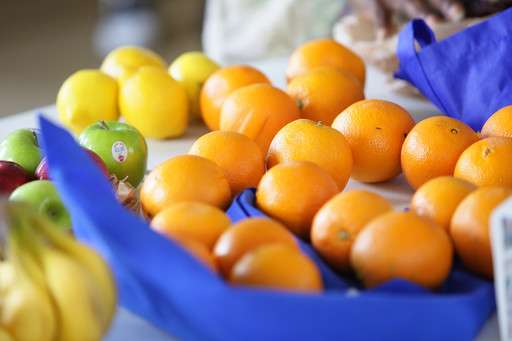Study finds children eat healthier at daycare centers than at home

A recent study conducted by researchers at Cincinnati Children's Hospital Medical Center has found that preschool age children are consuming more calories and fewer fruits, vegetables and milk outside of child care centers than what is recommended by the USDA's Child and Adult Care Food Program (CACFP).
Based off of guidelines from the Academy of Nutrition and Dietetics, children who attend full-time child care are to receive one-half to two-thirds of their daily nutritional needs while attending a child care facility, leaving about a third to one-half of their total calories to be consumed away from child care.
Kristen Copeland, MD, a researcher in the Division of General and Community Pediatrics and senior author of the study, and her team were interested in what children consume outside of child-care settings. They conducted the study on approximately 340 preschool-aged children from 30 randomly selected, licensed, full-time child-care centers in Hamilton County, OH.
"We found that after children left child-care centers, they weren't eating enough fruits or vegetables, or drinking enough milk to meet dietary guidelines, and on average consumed more calories than recommended."
In the study, which captured a single day of dietary intake, children attending full-time child care consumed an average of 685 calories between pick up from child care and bedtime. This amount was 140 calories more than the midrange of the recommendation for this timeframe 433-650 calories. Half of the children consumed more than 900 calories after child care.
During dinner and/or snack after child care, it is recommended that children eat 1/2-3/4 cup of fruit (e.g., 1/2-3/4 of a small apple), 1/2-3/4 cup of vegetables (e.g., 6-9 baby carrots) and 6 to 8 ounces of skim or low-fat (1 percent) milk to meet dietary recommendations.
The study found that that the majority of the calories that the children consumed at home came from sweet and salty snacks (for instance, pretzels, crackers, cookies, snack bars, doughnuts, candy), sugar-sweetened beverages, and whole milk or reduced-fat (2 percent) milk.
Dr. Copeland said that contrary to her team's hypotheses, children from low-income families did not consume fewer fruits and vegetables than children from upper income families; children consumed insufficient fruits and vegetables across the board. Lower-income children were also not significantly more likely to be overweight than upper-income children. The only significant difference in diet was that children from low-income families consumed more sugar-sweetened beverages.
Excess calories consumed outside of the child-care centers were significantly associated with children being overweight. For every increase in 200 calories consumed away from the center, the child's odds of being overweight increased by 20 percent.
Dr. Copeland says it is helpful for obesity prevention efforts to identify where children's excess calorie consumption is occurring.



















